I need to create i18n properties files for non-Latin languages (simplified Chinese, Japanese Kanji, etc.) With the Swing portion of our product, we use Java properties files with the raw UTF-8 characters in them, which Netbeans automatically converts to 8859-1 for us, and it works fine. With JavaFX, this strategy isn't working. Our strategy matches this answer precisely which doesn't seem to be working in this case.
In my investigation into the problem, I discovered this old article indicating that I need to use native2ascii to convert the characters in the properties file; still doesn't work.
In order to eliminate as many variables as possible, I created a sample FXML project to illustrate the problem. There are three internationalized labels in Japanese Kanji. The first label has the text in the FXML document. The second loads the raw unescaped character from the properties file. The third loads the escaped Unicode (matching native2ascii output).
jp_test.properties
btn.one=閉じる
btn.two=\u00e9\u2013\u2030\u00e3\ufffd\u02dc\u00e3\u201a\u2039
jp_test.fxml
<?xml version="1.0" encoding="UTF-8"?>
<?import java.lang.*?>
<?import java.util.*?>
<?import javafx.scene.control.*?>
<?import javafx.scene.layout.*?>
<?import javafx.scene.paint.*?>
<?scenebuilder-preview-i18n-resource jp_test.properties?>
<AnchorPane id="AnchorPane" maxHeight="-Infinity" maxWidth="-Infinity" minHeight="-Infinity" minWidth="-Infinity" prefHeight="147.0" prefWidth="306.0" xmlns:fx="http://javafx.com/fxml">
<children>
<Label layoutX="36.0" layoutY="33.0" text="閉じる" />
<Label layoutX="36.0" layoutY="65.0" text="%btn.one" />
<Label layoutX="36.0" layoutY="97.0" text="%btn.two" />
<Label layoutX="132.0" layoutY="33.0" text="Static Label" textFill="RED" />
<Label layoutX="132.0" layoutY="65.0" text="Properties File Unescaped" textFill="RED" />
<Label layoutX="132.0" layoutY="97.0" text="Properties File Escaped" textFill="RED" />
</children>
</AnchorPane>
Result

As you can see, the third label is not rendered correctly.
Environment:
Java 7 u21, u27, u45, u51, 32-bit and 64-bit. (JavaFX 2.2.3-2.2.45)
Windows 7 Enterprise, Professional 64-bit.
UPDATE
I've verified that the properties files is ISO 8859-1
